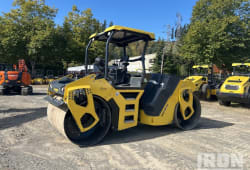Features of Electric Pallet Jacks
4 Min read
)
August 20, 2024
An electric pallet jack is a type of material handling equipment used to lift and move pallets within a warehouse or other facility. Unlike manual pallet jacks, which rely on physical effort to move the load, electric pallet jacks are powered by a battery-operated motor, allowing for easier and more efficient movement of heavier loads. They typically include features such as powered lifting and steering, making them ideal for longer distances and heavier-duty applications in industrial settings. Electric pallet jacks are commonly used to improve productivity and reduce strain on workers.
Where to Rent an Electric Pallet Jack
Renting an electric pallet jack is often available through local equipment rental companies, warehouse supply stores, or even some big-box retailers that specialize in tools and construction equipment. Companies like Sunbelt Rentals, United Rentals, and local providers typically offer rental options. When renting, consider factors like rental duration, load capacity, and whether delivery and pickup are available.
Key Considerations When Buying an Electric Pallet Jack
When buying an electric pallet jack, consider the weight capacity, battery life, and ease of maneuverability. Additional factors include the type of terrain (smooth or rough) it will be used on, as well as whether you need a walk-behind or rider model. Evaluate features like lift height, warranty options, and after-sales support. Brands like Crown, Raymond, and Toyota are known for reliable products, so comparing them is essential.
Advantages of a Rider Electric Pallet Jack
Rider electric pallet jacks offer several advantages, including faster travel speeds, reduced operator fatigue, and higher productivity over long distances. These jacks are especially useful in larger warehouses or distribution centers where efficiency and speed are critical. Rider models allow the operator to stand or sit while maneuvering, making them more suitable for continuous use over extended periods.
Certification Requirements for Operating an Electric Pallet Jack
Yes, OSHA requires operators of electric pallet jacks to be trained and certified. Electric pallet jack training involves learning safety procedures, proper handling techniques, and maintenance tasks. Certification courses can often be completed through third-party trainers or in-house training programs. These certifications help ensure workplace safety and compliance with regulations.
Stand-On vs. Walk-Behind Electric Pallet Jacks
A stand-on electric pallet jack allows the operator to stand on the machine while moving it, providing better visibility and reducing physical strain, especially over longer distances. In contrast, a walk-behind electric pallet jack requires the operator to walk alongside or behind the unit while controlling it, making it more suitable for shorter distances or tighter spaces. The choice between the two depends on the specific needs of your facility.
Features of Crown Electric Pallet Jacks
Crown electric pallet jacks are known for their durability, ergonomic design, and easy maintenance. They often include advanced safety features like stability control and durable construction that can withstand heavy usage. Crown jacks are engineered for performance and long-term use, making them popular in warehouses and logistics centers. Their after-sales service and wide dealer network also contribute to their popularity.
How Raymond Compares to Other Brands
Raymond is a leading brand known for innovation in electric pallet jacks. They offer models with excellent battery efficiency, ergonomic controls, and durable designs. Compared to other brands, Raymond jacks are known for their precision, reliability, and versatility in handling various pallet sizes and loads. Their customer service and extensive training programs also give them a competitive edge.
Reliability of Toyota Electric Pallet Jacks
Toyota electric pallet jacks are highly regarded for their reliability and robust build quality. Known for their longevity and low maintenance, Toyota jacks offer a balance of power and ease of use. Their electric jacks come with strong safety features, energy-efficient designs, and excellent performance in a variety of work environments. With Toyota’s reputation for quality and innovation, their electric pallet jacks are a solid investment for businesses focused on efficiency and durability.

Mike Kennedy is Boom & Bucket's Marketplace Operations Manager, where he leads shipping, warranties, and post-sale operations to create a seamless buyer experience. As one of the company's earliest team members, Mike helped build the foundation of Boom & Bucket's operations and guided its growth through acquisition by RB Global. He is passionate about scaling marketplaces, solving operational challenges, and improving efficiency to deliver industry-leading results.














